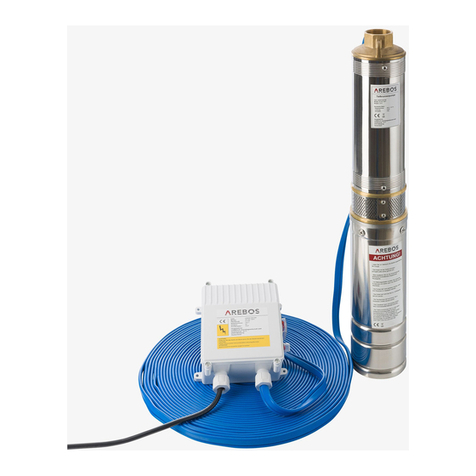
User’s Manual – AREBOS Domestic waterworks 1000 W
4
1.3 General safety instructions
•Your safety is of the most importance to us. Please make sure that you read this instruction
booklet before attempting to install and use the appliance. If you are unsure of any of the
information contained in this booklet, please contact the Retailer where you purchased your
unit.
•WARNING: Read all safety and usage instructions. Failure to follow the safety
information and instructions can cause electric shock, fire and/or serious injury. Keep all
safety and usage instructions for future reference.
•DO NOT use the product until you read the instruction manual.
•Make sure you have read the instruction manual thoroughly and understand the contents
before you start the installation.
•The instructions are in the interest of your safety.
•Remove the packaging material.
•Check whether the scope of delivery is complete and check it for transport damage.
•Packaging material is not a toy! Children are not allowed to play with plastic bags! There is
danger of suffocation!
•Be attentive. Pay attention to what you do. Get to work with reason.
•Do not use the house water system if you are unfocused, tired or under the influence of
drugs, alcohol or medication. A moment of carelessness when using the domestic
waterworks can lead to serious injuries.
•This device is not intended to be used by children and persons with reduced physical, mental
or psychological abilities and by persons without experience or knowledge of such devices,
except these persons are previously explained - by a person responsible for their safety -
about the regulations concerning the application and use of this device.
•Children or persons who do not know the operating instructions must not use the device.
1.4 Specific safety instructions
•There is a risk of injury due to electric current!
•Freezing, running dry or blocking by impurities must be avoided. This can lead to
irreparable damage.
•Do not use the device near flammable liquids or gases. Failure to do so may result in fire
or explosion.
•The operator is responsible for compliance with site-specific safety and installation
regulations.
•This water pump is designed for use with clean water. Their fields of application include
garden irrigation, the water supply of a household, irrigation in the garden or on
agricultural land.
•The pump is not suitable for use in swimming pools, ponds, baths and other
circumstances where persons may come in contact with water and therefore may not be
used for such purposes.
•This water pump must not be operated with flammable or harmful liquids.
•This water pump must not be exposed to impurities such as sand, stones, sticky
This product must not be disposed of with household waste!

























